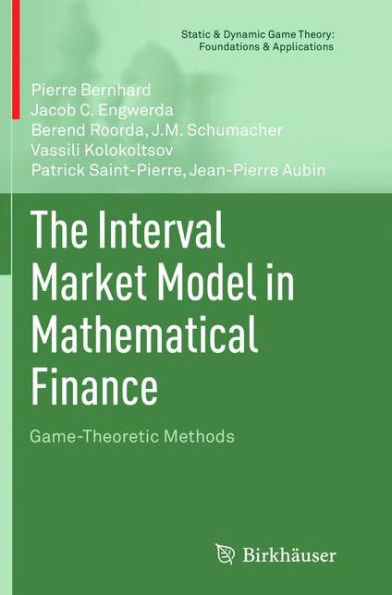A self-contained monograph, The Interval Market Model in Mathematical Finance: Game-Theoretic Methods assembles some of the most important results, old and new, in this area of research. Written by seven of the most prominent pioneers of the interval market model and game-theoretic finance, the work provides a detailed account of several closely related modeling techniques for an array of problems in mathematical economics. The book is divided into five parts, which successively address topics including:
· probability-free Black-Scholes theory;
· fair-price interval of an option;
· representation formulas and fast algorithms for option pricing;
· rainbow options;
· tychastic approach of mathematical finance based upon viability theory.
This book provides a welcome addition to the literature, complementing myriad titles on the market that take a classical approach to mathematical finance. It is a worthwhile resource for researchers in applied mathematics and quantitative finance, and has also been written in a manner accessible to financially-inclined readers with a limited technical background.
A self-contained monograph, The Interval Market Model in Mathematical Finance: Game-Theoretic Methods assembles some of the most important results, old and new, in this area of research. Written by seven of the most prominent pioneers of the interval market model and game-theoretic finance, the work provides a detailed account of several closely related modeling techniques for an array of problems in mathematical economics. The book is divided into five parts, which successively address topics including:
· probability-free Black-Scholes theory;
· fair-price interval of an option;
· representation formulas and fast algorithms for option pricing;
· rainbow options;
· tychastic approach of mathematical finance based upon viability theory.
This book provides a welcome addition to the literature, complementing myriad titles on the market that take a classical approach to mathematical finance. It is a worthwhile resource for researchers in applied mathematics and quantitative finance, and has also been written in a manner accessible to financially-inclined readers with a limited technical background.

The Interval Market Model in Mathematical Finance: Game-Theoretic Methods
348
The Interval Market Model in Mathematical Finance: Game-Theoretic Methods
348Paperback(2013)

Product Details
| ISBN-13: | 9781489985804 |
|---|---|
| Publisher: | Springer New York |
| Publication date: | 01/28/2015 |
| Series: | Static & Dynamic Game Theory: Foundations & Applications |
| Edition description: | 2013 |
| Pages: | 348 |
| Product dimensions: | 6.10(w) x 9.25(h) x 0.03(d) |
